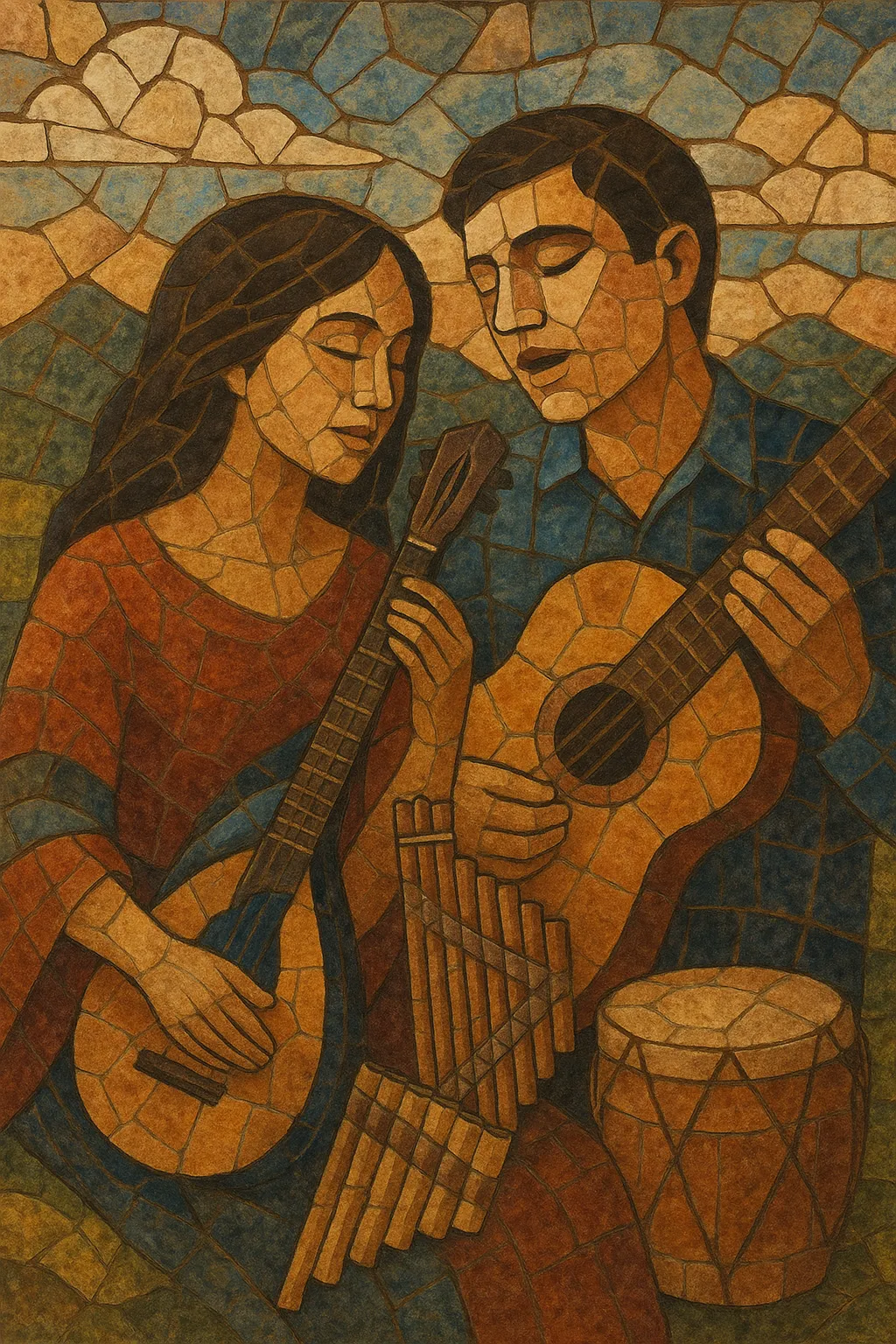Chuntunqui romántico is a contemporary Bolivian pop‑folk style that sets tender, love‑themed lyrics to the traditional Andean chuntunqui rhythm. The groove typically sits in a lilting 6/8 or 12/8, giving songs a gentle sway that feels both intimate and danceable.
Arrangements blend classic Andean timbres—charango, quena, zampoña/sikus, and andean bombo or wankara—with modern pop elements such as electric bass, keyboards, and smooth vocal harmonies. The result is a warm, melodic sound that preserves the Andean pulse while framing it with romantic, radio‑friendly songwriting.
The chuntunqui rhythm has long roots in Bolivian Andean tradition, commonly associated with festive and devotional repertoire (including villancicos) and characterized by a lilting 6/8 pulse. As Bolivian ensembles modernized through the late 20th century, the chuntunqui feel began appearing outside strictly seasonal or religious contexts, seeding a space for romantic topics over a familiar, comforting groove.
In the 2000s, a wave of Andean groups foregrounded love songs, soft harmonies, and polished production while retaining the chuntunqui swing. This crystallized into what listeners and programmers began recognizing as “chuntunqui romántico”: a smoother, melody‑driven approach aimed at mainstream audiences and wedding/serenade circuits, without losing Andean identity.
Through the 2010s, the style benefited from digital distribution and live videos, bringing the sound to regional diasporas. Arrangements incorporated electric bass pads, subtle synths, and pop‑ballad structure (intro–verse–pre‑chorus–chorus–bridge) while preserving charango arpeggios and wind‑instrument hooks. Today, chuntunqui romántico remains a go‑to Andean romantic idiom for serenades, radio ballads, and festival stages.


